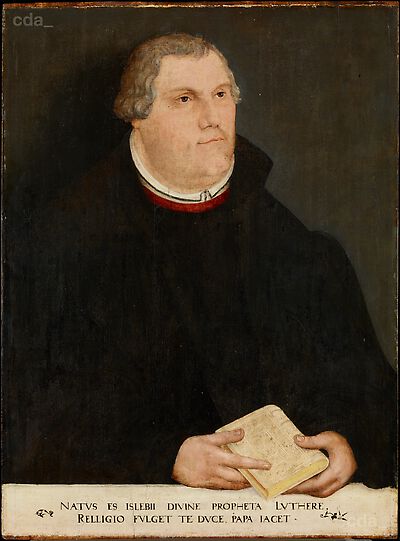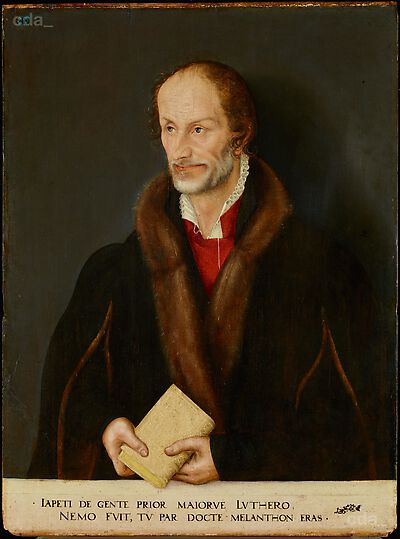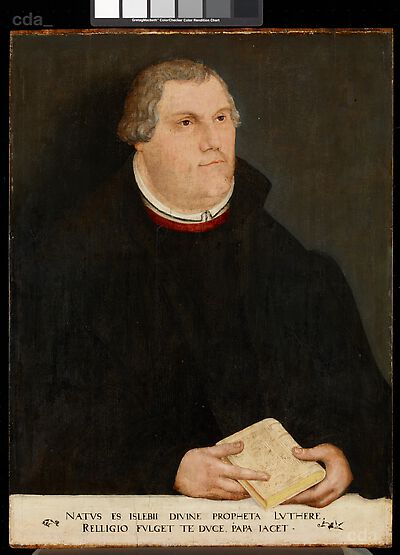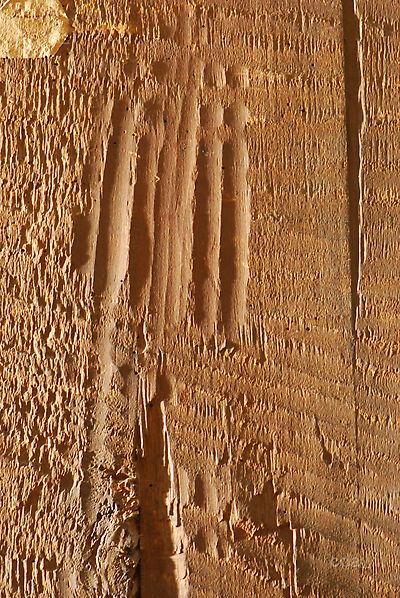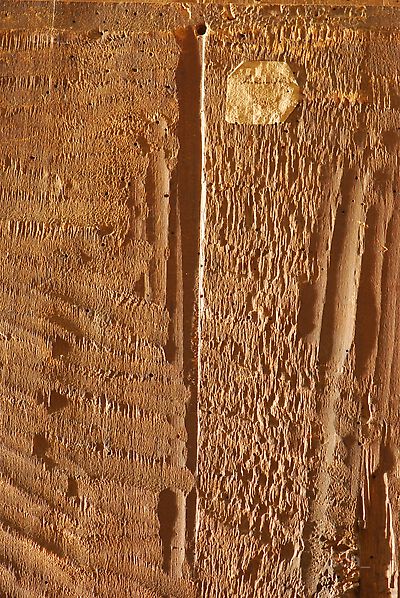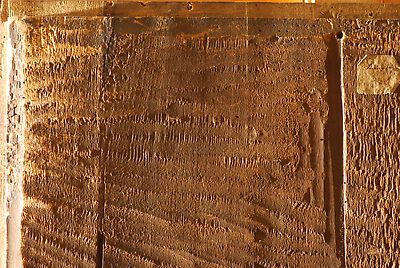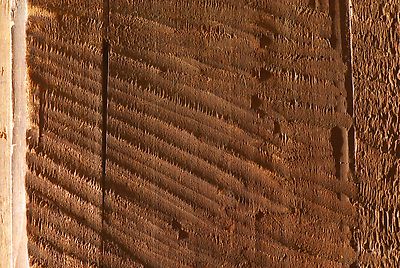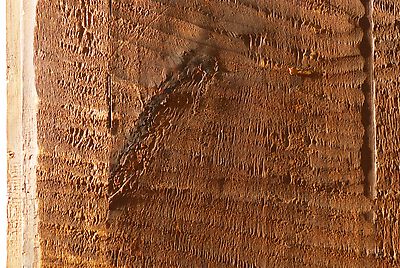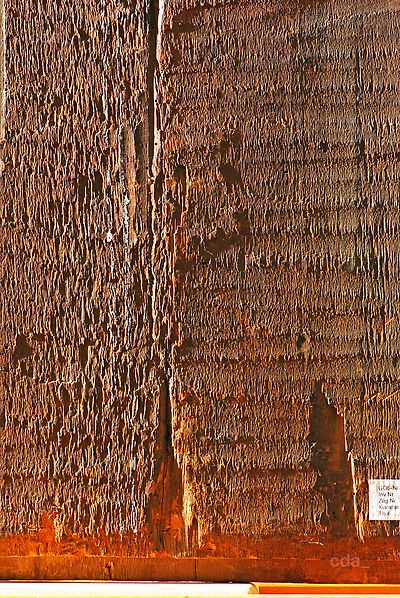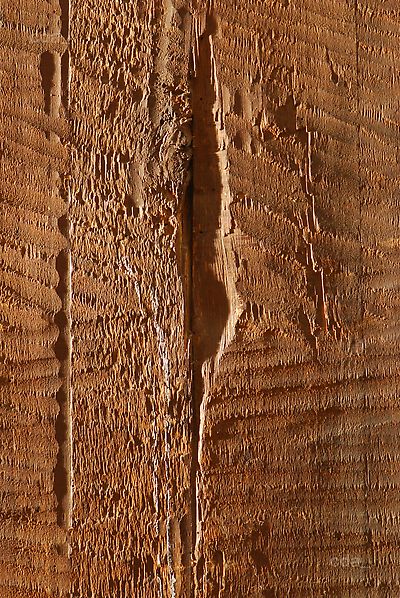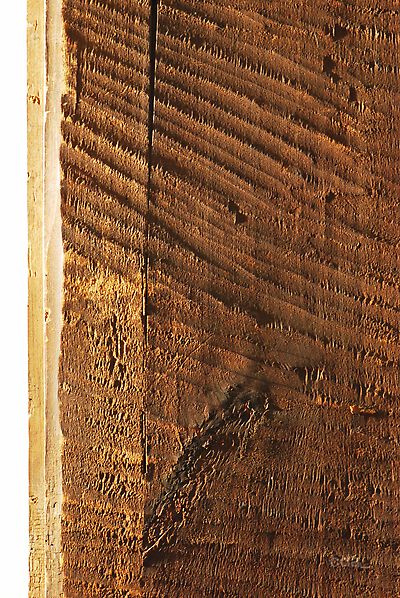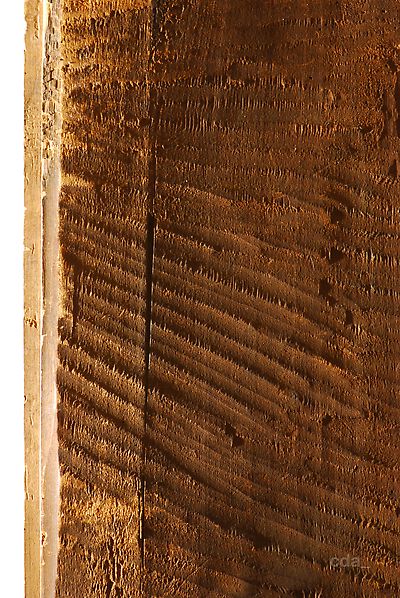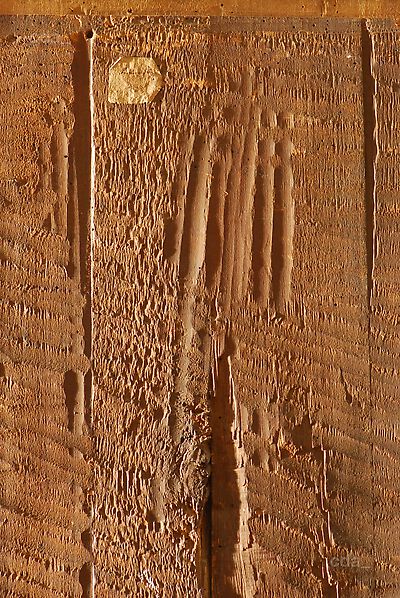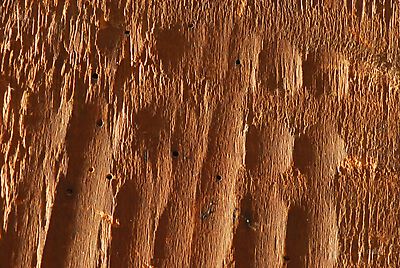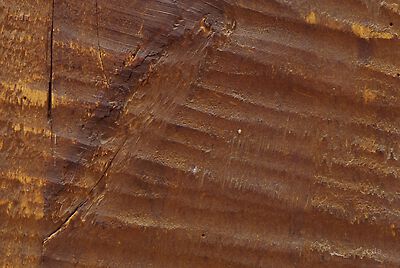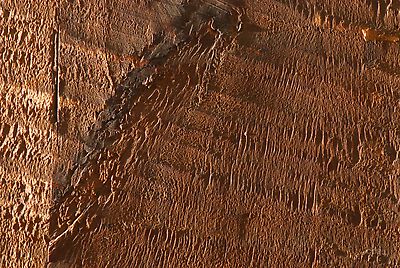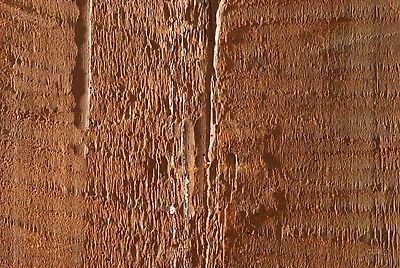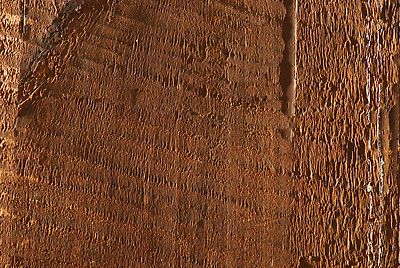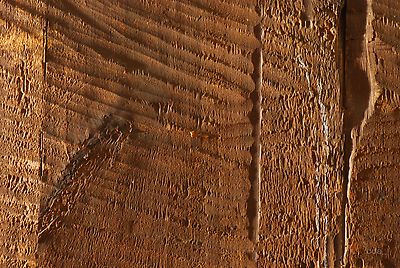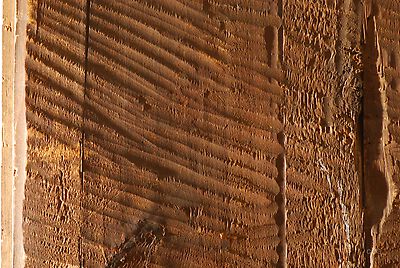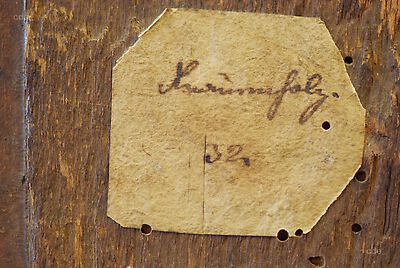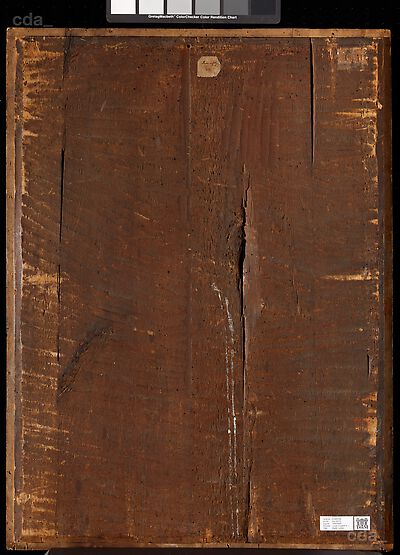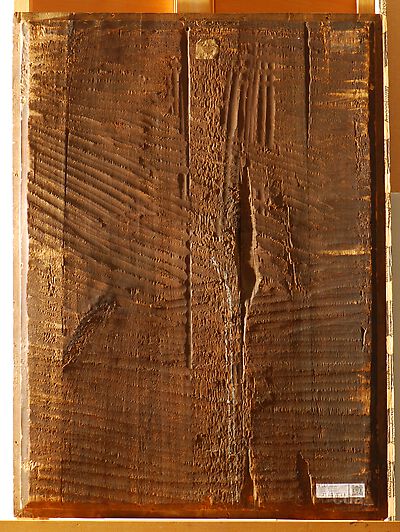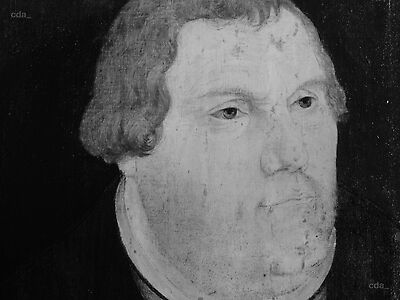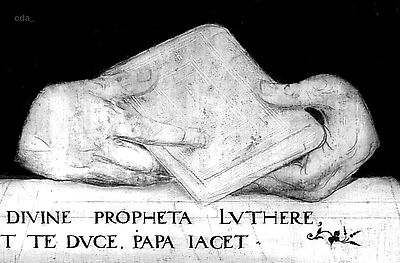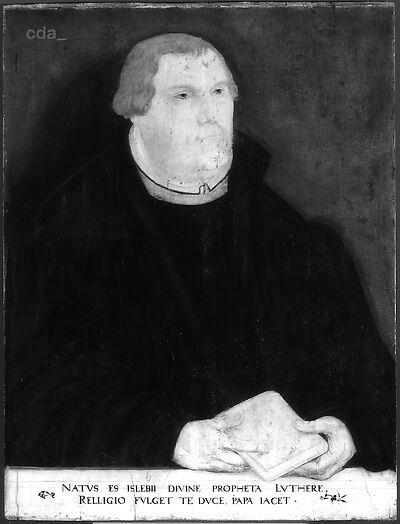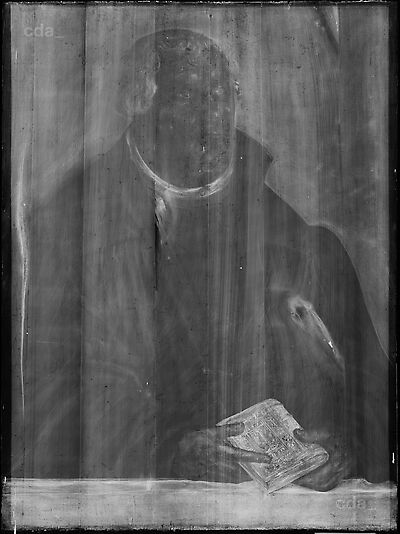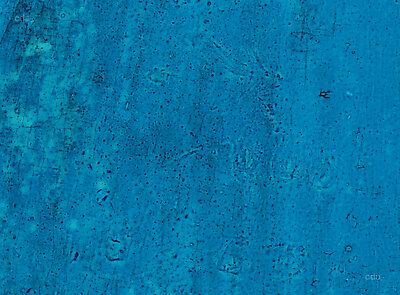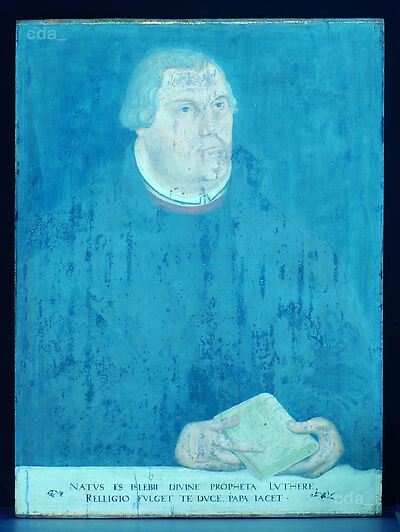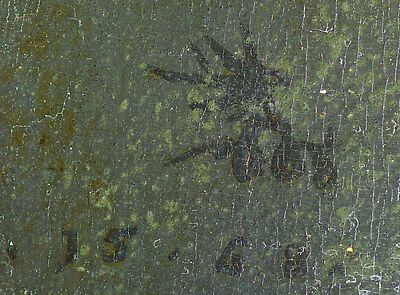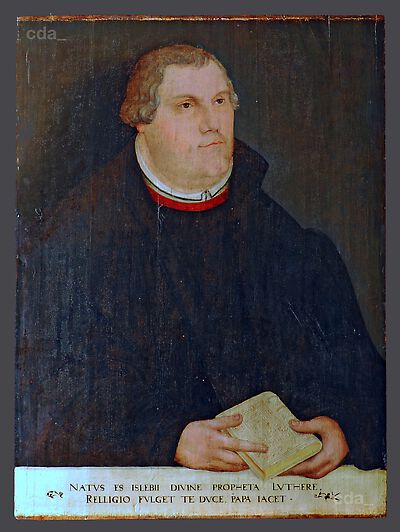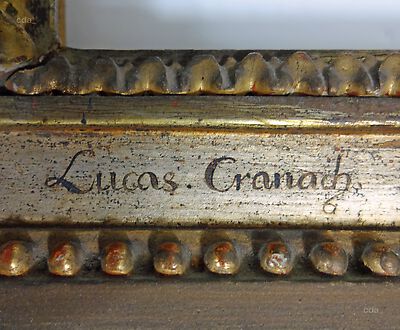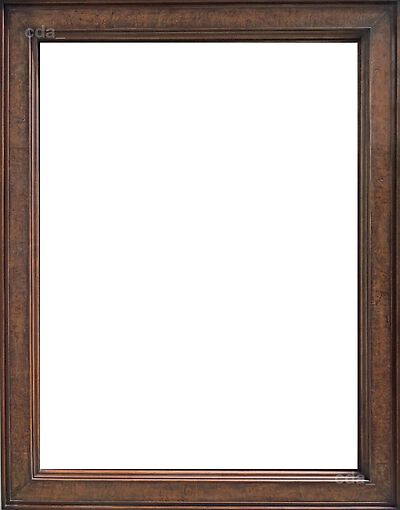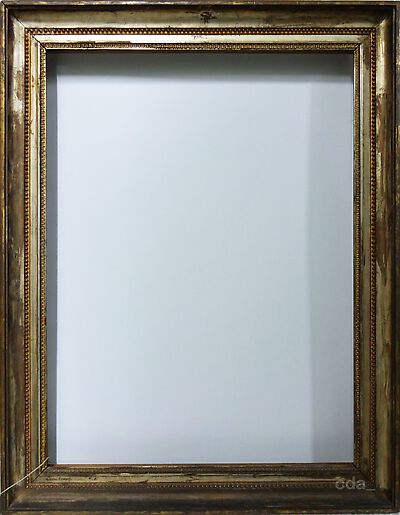Support
Lime
The wooden panel is up to 8 mm thick at the edges. The total thickness is 2.8 cm. The panel consists of six vertically aligned planks (the wood grain is vertical). The x-radiograph shows that the planks were glued together with butt-joins. The planks are tangentially cut and exhibit diagonally aligned annual rings. Heartwood was joined to sapwood. Viewed from the front the heartwood is on the left side of all planks and the sapwood on the right.
The width of each plank is as follows (from left to right):
Plank 1: 5.2 (top); 3.7 cm (bottom)
Plank 2: 8.2 cm (top); 9.3 cm (bottom)
Plank 3: 11.6 cm (top); 12.4 cm (bottom)
Plank 4: 17.1 cm (top); 18.2 cm (bottom)
Plank 5: 12.5 cm (top); 13.3 cm (bottom)
Plank 6: 9.6 cm (top); 7.5 cm (bottom)
There is a knot in the central/upper zone of the third plank. The fourth plank also exhibits an obliquely cut knot in the central/lower zone. Both knots were left untreated on the front and the reverse when the panel was produced. The reverse of the painting exhibits rather coarse tooling marks. There are numerous troughs of varying widths running vertically, horizontally and diagonally from left to right across the joins. These may result from the use of a block plane and measure up to 2.4 cm in width. The wooden panel exhibits a rebate with a maximum width of 2 cm on all four sides. The width of the rebate ranges between about 1.5 cm and 1.7 cm. It has a chamfered edge.
Ground and Imprimatura
The ground application is a white, water-soluble chalk admixture. An imprimatura containing lead white was probably applied over this. The x-radiograph shows white stripy brushstrokes applied diagonally from left to right running counter to the painted forms. In raking light these brushstrokes are also visible on the surface in the area of the gown and the background. A barbe is only present at the top and the bottom edges of the panel. It is slightly raised towards the edge. At the bottom edge of the painting beyond the barbe there are traces of original paint lying directly on the bare wood.
Underdrawing
Examination employing infrared reflectography revealed the relatively fine black lines of the underdrawing, which was probably executed with a pointed black drawing implement. Detailed underdrawing is visible in the hands. Lines in the region of the head appear more formulaic. The lines are frequently visible with the naked eye. This is caused by on the one hand the increased transparency of the painted areas containing lead white and on the other the extensive abraded areas. In general the underdrawing is binding for the final painted version.
Paint Layers and Gilding
PIGMENTS: (X-ray fluorescence spectroscopy)
At all the points measured lead was detected (probably a lead based pigment in the ground or the imprimatura).
Red 5,7 (lips; flesh paint: hands): some vermilion, lead white; 3 (collar): vermilion, lead white, possibly some lake pigment
White 9 (background): lead white
Yellow 8 (book): lead-tin-yellow
Brown 2 (hair): probably ochre, lead white
Black 4 (gown): probably carbon black ; 10 (inscription): probably carbon black, copper based pigment)
Ground 6 (exposed white, raised): lead white (imprimatura?)
The painting was probably executed employing tempera.
Fine cracks in the upper paint layer are visible in the dark background and the areas of the gown. They are relatively wide and slightly raised and appear to have developed during the drying process of a water-based binding medium with high glue content. In other areas impasto an optical assessment suggests a higher oil ratio.
The artist's technique is revealed by the sequence of the paint layers:
In the darker areas a thin, yellowish brown transparent underpaint is visible over the white imprimatura. This is present for example in the background, within the hair and in outer areas of the darker flesh paint where the application is denser. It probably served to give the cooler grey background a warmer, greenish tone. Furthermore this layer also provides the base tone for the hair and the shadows in the flesh paint. Examination under the stereomicroscope could not confirm whether the layer was applied over the entire surface. Evaluation is made more difficult by abrasion within the areas of flesh paint. Subsequently the artist applied the flesh paint and executed the gown and the background. In general the contours of the figure lie beneath the paint of the background. However the artist did to some extent work from both sides, overlapping slightly. The paint of the window ledge in the lower section of the painting was applied last. The relatively dense application of yellowish brown underpaint in the region of the hair was held in reserve while the background was painted. Later highlights in the form of thin, impasto light grey and white hair strands were applied over the base tone (and where overlapping on the background paint). In the greenish grey background lead white and carbon black as well as copper based pigments were detected employing x-ray fluorescence spectroscopy. Unusually the pigment smalt - frequently employed by Lucas Cranach the Younger in backgrounds - was not detected in any form on this painting.
A light paint layer containing lead-tin-yellow was employed to block in the shape of the book. The cover consists of a cream coloured layer with a reddish tinge on top of which off-white highlights create the decoration. The window ledge which runs parallel to the bottom edge exhibits the following paint sequence: an initial cream coloured layer; above this along the edge a dark strip containing numerous red pigments creating a pinkish tone that articulates perspective. The Latin inscription painted in black was added last. The varnish is not original.
It can be confirmed that the painting CDA.DE_DHM_Gm93-79 ‚Martin Luther (1483-1546)' corresponds the use of material and technique with its pendant CDA.DE_DHM_Gm93-80 ‘Philipp Melanchthon (1497-1560)‘.
Framing
previous (not the original) frame: wood, oil gilding (silver), yellowish brown coating
present frame: profiled battens, the base is pine wood with attached cherry wood battens and stained verneer.
Dimensions of the present frame: 100 x 78 x 9.5 cm (glazed)
- examined by Mathias Lang
- examined by Ulrike Hügle
